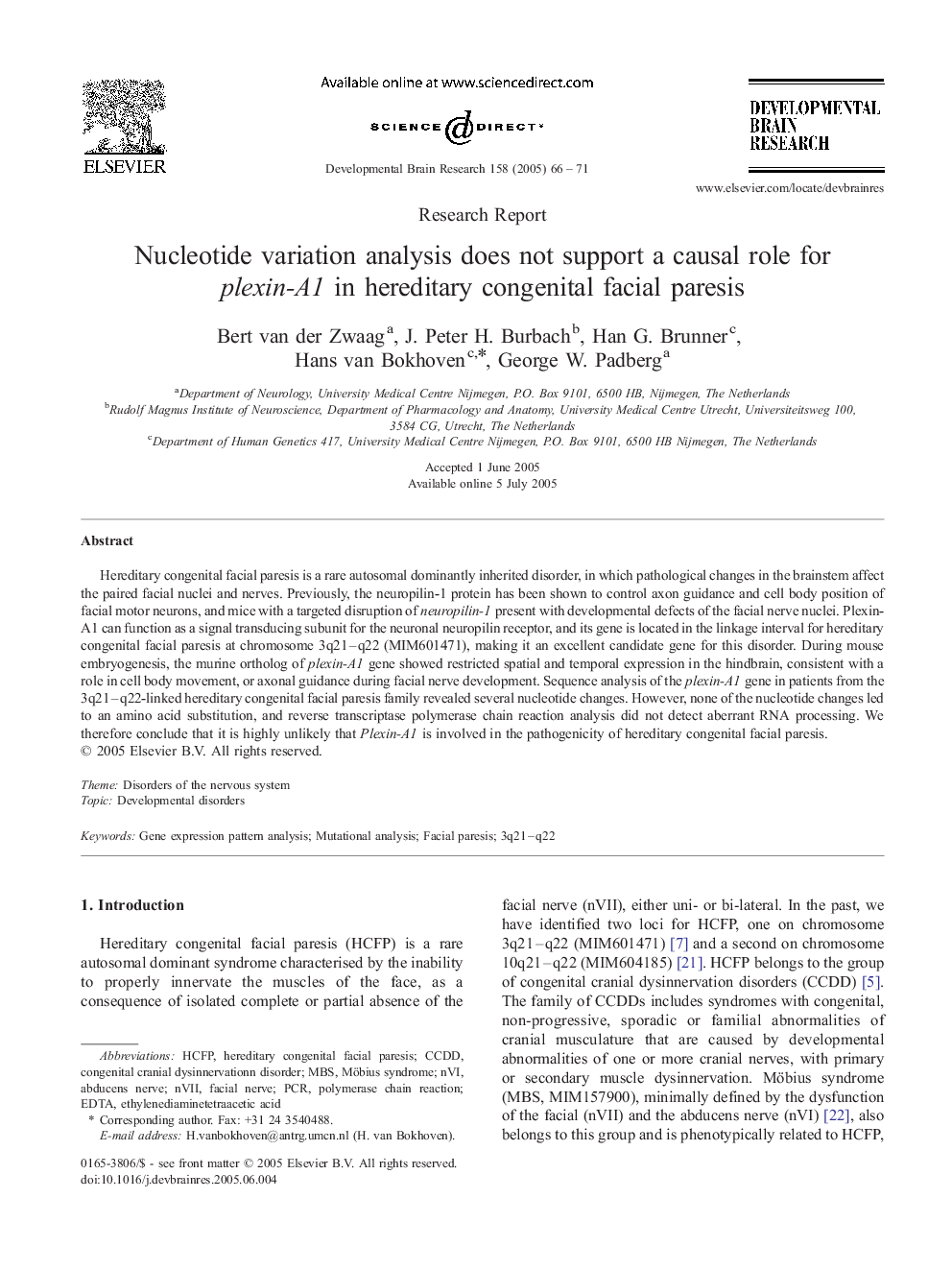| Article ID | Journal | Published Year | Pages | File Type |
|---|---|---|---|---|
| 9414516 | Developmental Brain Research | 2005 | 6 Pages |
Abstract
Hereditary congenital facial paresis is a rare autosomal dominantly inherited disorder, in which pathological changes in the brainstem affect the paired facial nuclei and nerves. Previously, the neuropilin-1 protein has been shown to control axon guidance and cell body position of facial motor neurons, and mice with a targeted disruption of neuropilin-1 present with developmental defects of the facial nerve nuclei. Plexin-A1 can function as a signal transducing subunit for the neuronal neuropilin receptor, and its gene is located in the linkage interval for hereditary congenital facial paresis at chromosome 3q21-q22 (MIM601471), making it an excellent candidate gene for this disorder. During mouse embryogenesis, the murine ortholog of plexin-A1 gene showed restricted spatial and temporal expression in the hindbrain, consistent with a role in cell body movement, or axonal guidance during facial nerve development. Sequence analysis of the plexin-A1 gene in patients from the 3q21-q22-linked hereditary congenital facial paresis family revealed several nucleotide changes. However, none of the nucleotide changes led to an amino acid substitution, and reverse transcriptase polymerase chain reaction analysis did not detect aberrant RNA processing. We therefore conclude that it is highly unlikely that Plexin-A1 is involved in the pathogenicity of hereditary congenital facial paresis.
Keywords
Related Topics
Life Sciences
Neuroscience
Developmental Neuroscience
Authors
Bert van der Zwaag, J. Peter H. Burbach, Han G. Brunner, Hans van Bokhoven, George W. Padberg,
